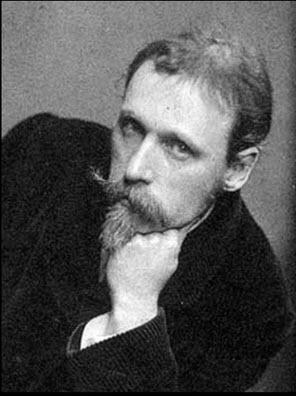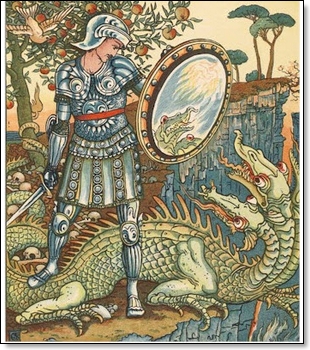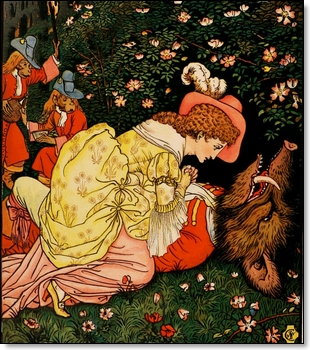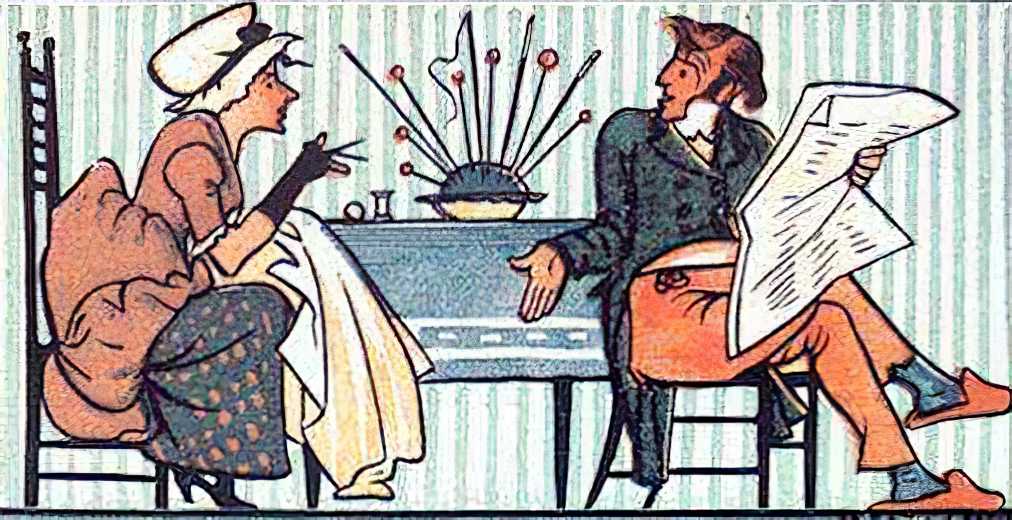In "Walter Crane's Utopian Visions: Imagining a Better Society through Art," we delve into the captivating work of Walter Crane, a prominent artist and social activist of the late 19th century. Known for his intricate illustrations and powerful narratives, Crane's art served as a medium to convey his utopian ideals, envisioning a world where social justice, equality, and cooperation prevailed. From his compelling depictions of communal living to his advocacy for women's rights and workers' rights, Crane's artwork served as a beacon of hope for a brighter future. Join us as we explore Crane's visionary art and delve into the profound impact of his utopian visions on society and art movements of his time, and beyond.
-enlarge.jpg)
Walter Crane combined his artistic talents with social activism. His work transcended mere aesthetics, instead employing his artistic talents as a dynamic force for social change. Crane's art was a reflection of his utopian ideals, bursting forth with progressive ideas that challenged artistic and societal norms. Through his illustrations, designs, and active engagement in social movements, Crane's art promoted positive change and advocated for a better society.
Crane made significant contributions in the fields of children's book illustrations, political cartoons, and the decorative arts, including designs for textiles and wallpapers. His distinctive style, characterized by intricate detail, vibrant colors, and bold composition, which made Crane stand out from other artists of his era. Moreover, Crane's participation in the Arts and Crafts movement, which sought to revive traditional craftsmanship and promote handmade goods in the face of industrialization, further underscores his significance as an artist who worked to change traditional norms.
Crane saw art as a dynamic force for transformation, advocating for equality and envisioning a world that embraced inclusivity and equality between the sexes and social classes. The message of his art was both overt (as in the case of his cartoons in support of socialist causes) and more subtly educational (as in the case of his storybook illustrations). In both instances, Crane sought to enlighten and empower people, especially the young. He viewed art as a dynamic force that could stimulate young minds and instill values of social justice, equality, and empathy. His illustrations in children's books were not just visually alluring, but also carried profound messages of social justice and equality. He believed that shaping young minds with these values through art could sow the seeds for a better future society. For example, his book "The Baby's Own Aesop" (1887) conveyed moral lessons and virtues such as kindness, compassion, and fairness through captivating fables.
Beyond his work for children, Crane also harnessed his art as a form of fervent political activism. He crafted numerous political cartoons that fearlessly addressed the pressing social and political issues of his time, including women's suffrage, labor rights, and anti-imperialism. His illustrations were a striking visual commentary that defied conventional wisdom and fervently advocated for social change, in an era when cultural and military imperialism were the norm. Crane believed that art could ignite awareness, rallying public opinion, and influencing policy decisions.
-enlarge.jpg)
Crane was a prominent figure in the Arts and Crafts movement, which sought to revive old skills and artistic techniques in order to counter-act the dehumanizing effects of industrialization by championing craftsmanship and the inclusion of beauty and art in everyday utilitarian objects such as furniture and wallpapers. His designs for textiles, wallpapers, and other decorative objects were not only visually captivating, they were an expression of his utopian dream of a society in which workers were valued craftsmen, not merely cogs in an industrial factory machine.
Crane's commitment to social change extended to championing progressive causes and issues which were unpopular at the time, such as the women's suffrage movement and the anti-imperialist movement. His activism included creating thought-provoking posters, banners, and other visual materials to spread the message of these movements. He was a committed socialist his entire adult life, fearlessly advocating for progressive ideas, challenging societal norms, and inspiring transformation, utilizing his artistic skills to spread the message. Crane's art served as a compelling means of advocacy, propelling his vision of a more equitable and just society forward.
Walter Crane's art was not only a reflection of his artistic prowess, but also a manifestation of his dynamic and captivating utopian vision. His illustrations for children's books, his political cartoons, his designs for decorative arts, and his involvement in social movements all embodied his unwavering commitment to promoting progressive ideals and igniting social change.
His art was a weapon, a visual commentary that spoke loudly and passionately.





